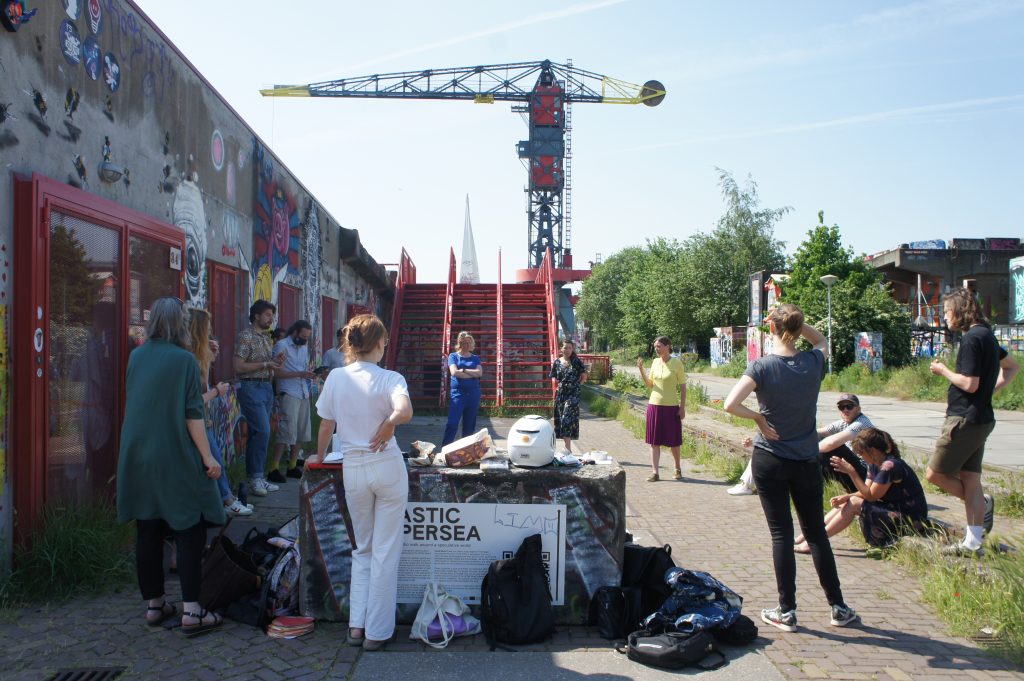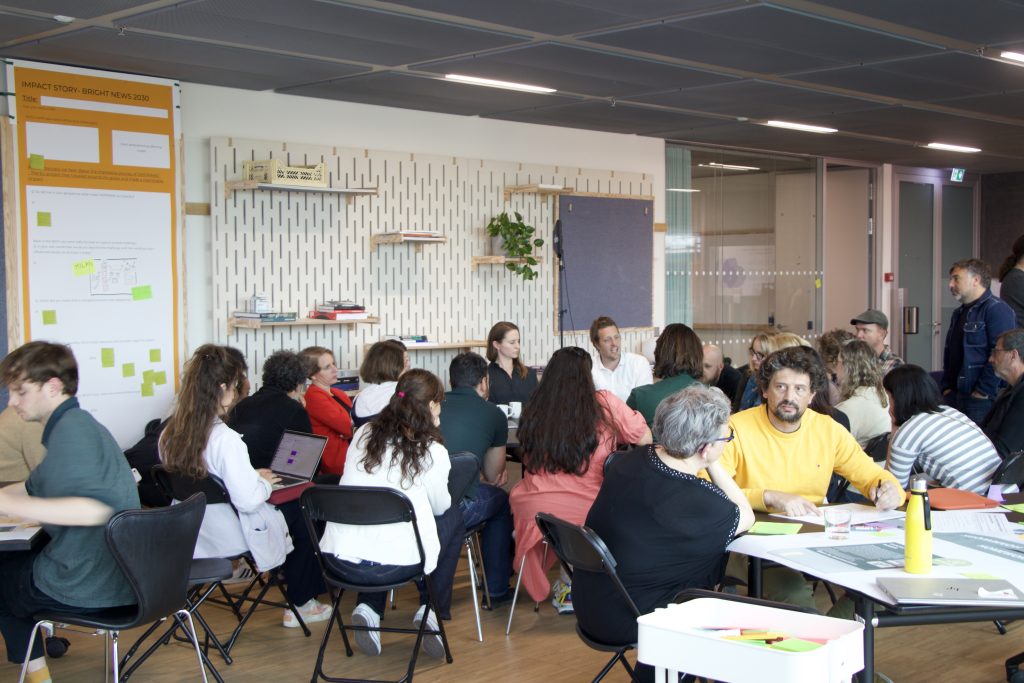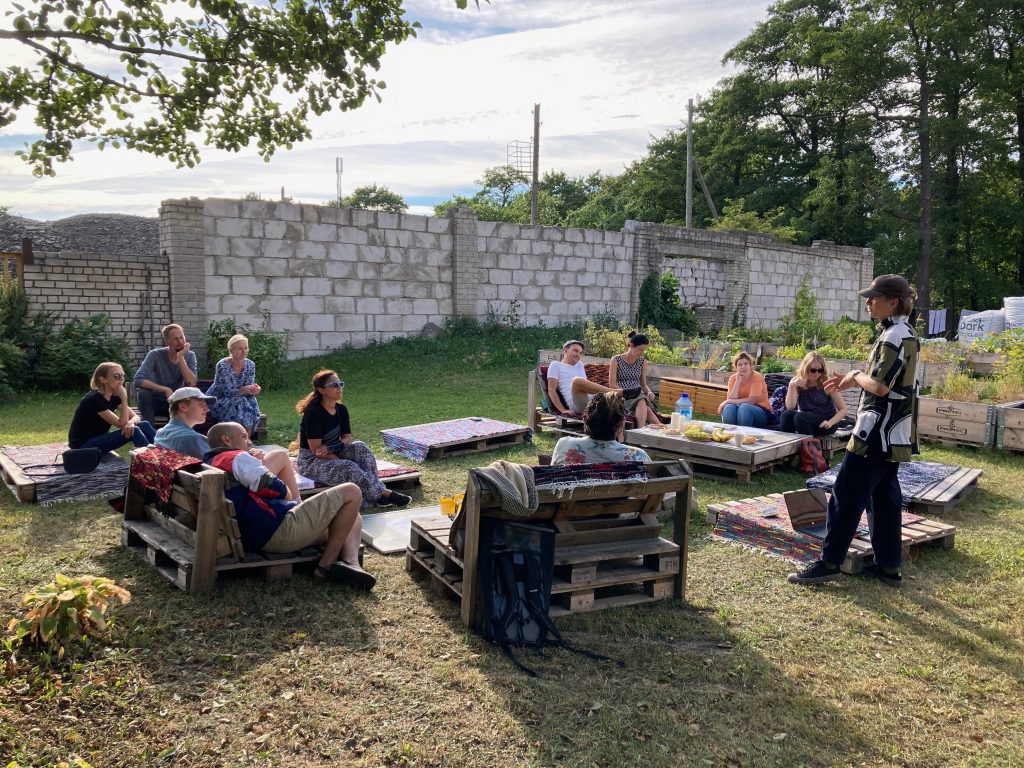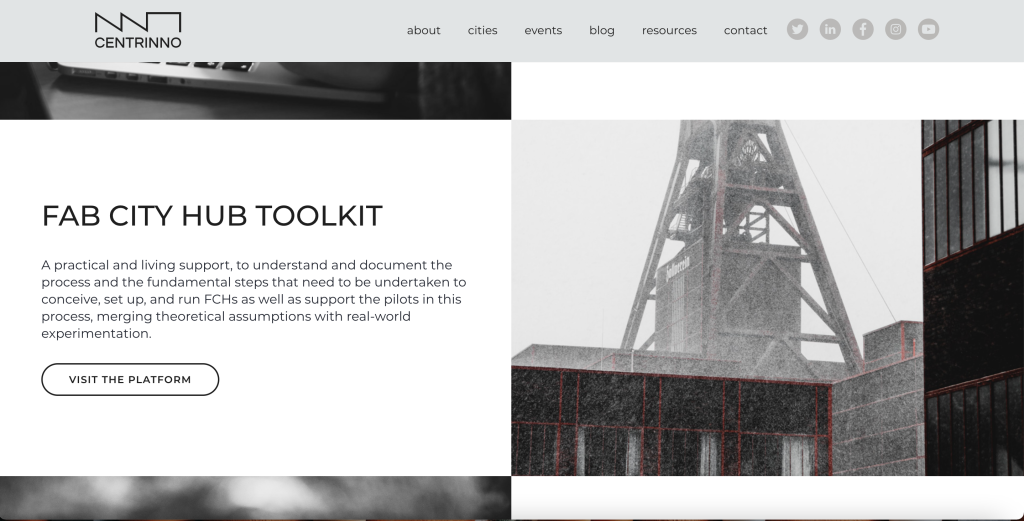BLOG
5 Good reasons to dive into the Fab City Hub Toolkit and start testing it in your city!
Discover a flexible and adaptable resource to orient yourself into the chaotic, but exciting effort of launching a Fab City Hub for your city transition!

A circular shopping bag realised thanks to Milans Pilot actors for the Barcelona Consortium Meeting. Photo Credits: Barcelona Pilot
Summer break has come to an end, and it’s time to return to work and prepare yourself for the launch of your project supporting your city’s transition.
In this article, we would like to present you with five good reasons to consider adopting the Fab City Hub (FCH) Toolkit for your innovative space, your network of spaces, or within your community to support circular productive activities in your local ecosystem!
For more than a year, Volumes, in collaboration with CENTRINNO partners and pilot cities, has been working on the development of a flexible and adaptable toolkit. This toolkit compiles and curates a selection of tools, methods, and best practices to support organisations in establishing their Fab City Hubs throughout Europe and beyond. You can explore the FCH Toolkit at this link: https://toolkit.centrinno.eu/
Fab City Hubs represent open and innovative urban models designed to facilitate urban transitions. They serve as physical interfaces that connect stakeholders at various urban scales, fostering collaboration and the exchange of skills and knowledge, whether at the neighbourhood, city, or bioregional level.
Here are five compelling reasons why you should consider adopting this toolkit and testing the tools we have gathered within your local environment:
1. If you are tired of those conventional toolkits packed with information that ultimately fail to address your local challenges.

A wood workshop organised in Barcelona. Photo credits Barcelona Pilot
The FCH Toolkit aims to be different from typical tool collections that usually lack relevance for your local challenges. In creating the FCH toolkit, we have embraced a flexible and adaptable approach, capable of accommodating the diverse scenarios an organisation, a community of citizens, or a municipality may encounter when endeavouring to establish an innovative space or a network of spaces to support their circular transition.
In this section, you can find an in depth description of the approach we have adopted.
Furthermore, the FCH Toolkit is structured as a non-linear set of contents that you can navigate in different ways by choosing different entry points.
In this other section, you will find a clear explanation on how we have organised and curated resources, tools and best practices to orient yourself and find what you are looking for.
Lastly, the FCH Toolkit is designed as a living and evolutive tool. CENTRINNO’s mission is not only to support the implementation and expansion of FCHs in Europe and beyond but also to establish a network of individuals and places known as the FCH Network. This network will foster the replication and enhancement of these models beyond CENTRINNO lifespan by sharing their experiences, insights, tools, and activities related to FCHs.
The current version of the FCH Toolkit has been developed through the experimentation carried out by the nine initiators of this Network, which includes the nine pilot cities of CENTRINNO and a group of experts within this consortium.
However, we believe that your experiences, feedback, and successful tools in establishing FCHs are crucial for enriching and broadening the vision and goals of Fab City Hubs. That’s why we’ve created a dedicated section in the FCH Toolkit where we want to hear about the challenges your city or community might encounter when setting up a FCH and, if applicable, incorporate new and valuable tools and stories into our collection.
2. If you (still) don’t know what a Fab City Hub is and you are eager to learn more.

Consortium meeting in Barcelona, Fab Lab Barcelona. Photo credits: Fab Lab Barcelona (Barcelona Pilot)
Here is another compelling reason to delve into the FCH Toolkit. If you want to discover what is and what is not a Fab City Hub? What are the guiding principles you can follow as research paths to define your local model?, and how these innovative typologies can sustain your city’s transition into an ecological, inclusive and productive ecosystem, then you should have a look to two sections of the Toolkit :
The first one comprises a compilation of Frequently Asked Questions that Volumes curated in collaboration with the Fab City Foundation. These FAQs aim to address some of the most common inquiries, supporting you in better defining this innovative typology and identifying potential stakeholders.
The second section features a collection of 10 guiding principles derived from previous research on Creative and Productive Hubs (download here the Creative and Productive Hub Journal). These principles offer preliminary recommendations to consider when you embark on the journey of launching your Fab City Hub.
3. If you are enthusiastic about FCH and want to get started but unsure where to begin.

An Emotion Networking session in Amsterdam.
Photo credits: Amsterdam
Rest assured you’re not alone facing this challenge when it comes to launching your FCH project. We recognize that determining where and how to commence is often the most daunting hurdle for organisations, groups of citizens, or even municipalities looking to establish an innovative space. That’s why we’ve organised the FCH Toolkit and its resources to accommodate various approaches.
In the current version of the FCH Toolkit, you have the option to explore two ways of navigating for gaining an understanding of how to set up and launch FCHs. These two sections offer distinct entry points for organisations embarking on this journey, each tailored to accommodate different starting points or to address various local challenges:
 The Fab City Hub Roadmap. Image credits: Volumes
The Fab City Hub Roadmap. Image credits: Volumes
The first pathway, I want to set up a FCH from scratch, is designed for citizens, entrepreneurs, and local communities starting from scratch. It offers a flexible 14-step roadmap as a strategic plan, providing a non-linear journey to follow (if an order is suggested , you can choose the one that best suits your current situation). These 14 steps are derived from the 10 principles for Fab City Hubs, along with other theoretical resources and practical experiments.
It’s important to note that the FCH Roadmap simplifies a much more complex process and doesn’t encompass all the details, features, and challenges that may arise during the project. Instead, it serves as a guide to orient various community members and stakeholders and facilitate their collaboration toward a shared objective.
The second pathway, I want to work on a specific challenge, is primarily tailored for CENTRINNO’s pilot cities. It offers tools, methods, and stories that address specific challenges aligned with the CENTRINNOs’ Key Concepts , encompassing Circularity, Social Inclusion, Vocational Training, Heritage, and Innovation space challenges.
However, because these challenges are widespread and globally relevant for those interested in supporting urban transitions, this section can also be of interest to your innovative hubs. It can serve as a highly practical resource for organisations that already have established innovative hubs and aim to address particular challenges unique to FCHs, as the five mentioned above.
4. If your motto is : think globally, act locally.

A workshop organised during the Consortium meeting in Copenhagen. Photo credits: Copenhagen Pilot
In this case, the FCH Toolkit serves as a valuable synthesis of these two approaches. The Toolkit has been developed recognising that addressing local challenges related to production, sustainable and inclusive urban regeneration requires leveraging local resources and engaging with actors deeply embedded in the specific ecosystem. Simultaneously, it encourages connections and knowledge-sharing with global communities, amplifying the potential for larger impacts.
By offering both a structured 14-step roadmap and a rich repository of practical and actionable resources (Tools and Stories), the FCH Toolkit provides you with methodological and theoretical approaches that cover the foundational aspects of establishing a FCH. Furthermore, it facilitates direct connections to a community of stakeholders and their Stories, which can serve as valuable inspiration for your local project.
For example, if you take a look at the Build and Grow your Community step, you can gain a better understanding of why it’s crucial to cultivate a strong sense of community for your FCH. You’ll learn about the key aspects to consider and have hands-on access to a specific tool that you can use to organise your initial Fab City Hub Community Campaign. You can also read the Tallinn Story to see how they facilitated inclusive dialogues to strengthen the KOPLI 93 community.

Co-design workshop from community value in Tallinn. Photo credits: Tallinn Pilot
Furthermore, within the resources that will be systematically integrated into the FCH Toolkit, you may want to explore the Fab City Hub Voices series. This collection of webinars is designed to provide insights into the challenges and opportunities associated with launching FCHs, based on the practical experiences of the nine FCH teams involved in CENTRINNO.
5. If all the previous reasons make sense for you, and you want to stay connected and be part of this adventure.

A screenshot of the Centrinno web page linking the Fab City Hub Toolkit
Consider the Fab City Hub Toolkit as an excellent gateway to staying informed about the progress and development of the nine Fab City Hubs and their teams. Being an adaptable and easily accessible resource, you can continuously check for updates.
Currently, we are planning new updates in the coming months, incorporating insights from the third and final sprint of the nine Fab City Hubs. We are also preparing a comprehensive iteration, set to be released in February 2024, within the CENTRINNO framework.
Moreover, the FCH Toolkit is closely connected to and complemented by three significant platforms that deserve your attention:
- 1. CENTRINNO Cartography: this online platform visualises the multifaceted nature of places . It analyses the potential and opportunities at the city scale within each of the nine Fab City Hub Network member cities.
- 2. The Living Archive : a resource containing stories from post-industrial sites, helping communities envision a new “critical heritage of making.” It facilitates the creation of inclusive and circular hubs.
- 3. The CENTRINNO Official Website : this is the primary entry point to access all of the aforementioned platforms and will keep you informed and up-to-date about events, articles, and resources related to Fab City Hubs.































































































